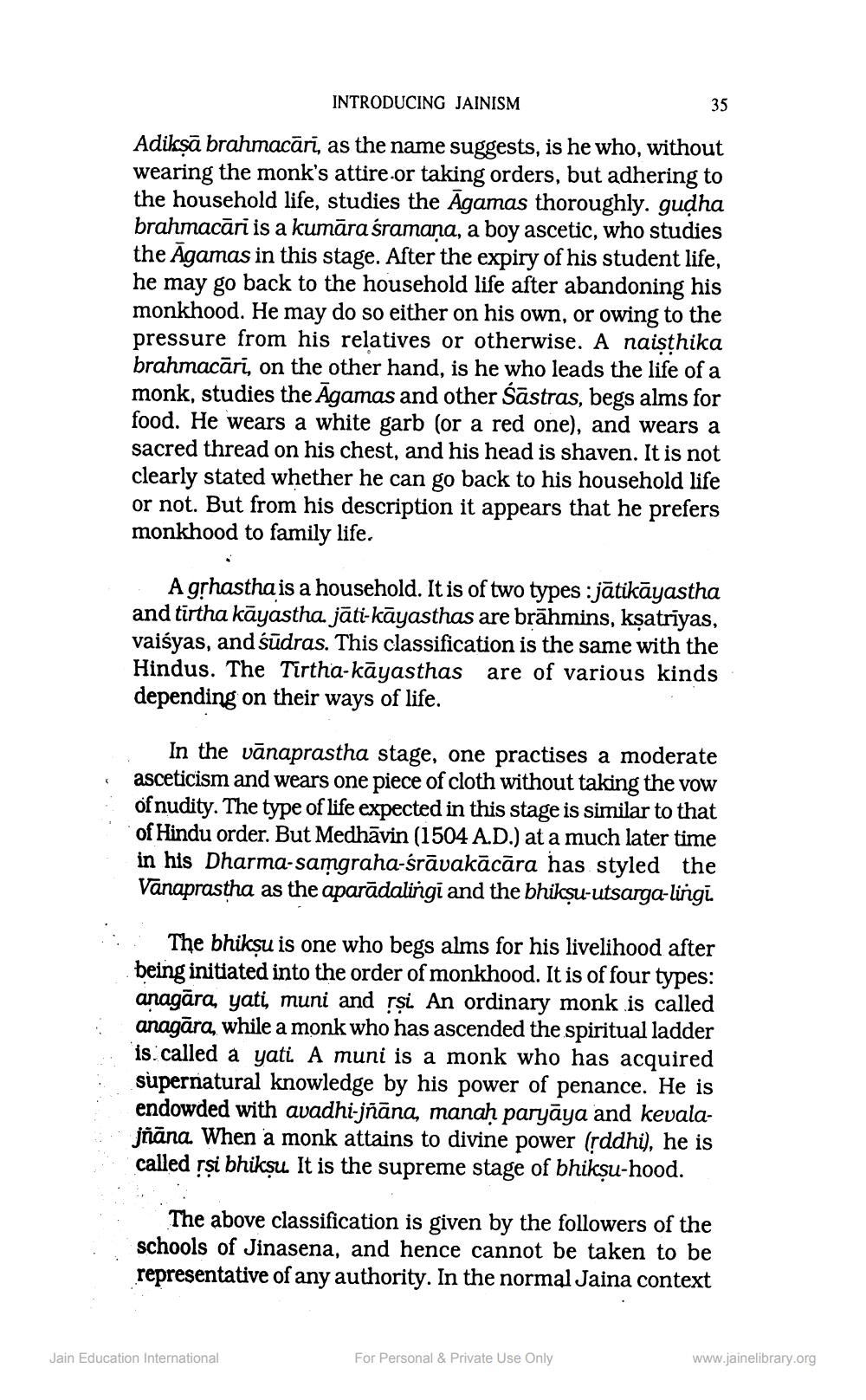________________
INTRODUCING JAINISM
Adikşā brahmacārī, as the name suggests, is he who, without wearing the monk's attire.or taking orders, but adhering to the household life, studies the Agamas thoroughly. gudha brahmacāri is a kumāra śramana, a boy ascetic, who studies the Agamas in this stage. After the expiry of his student life, he may go back to the household life after abandoning his monkhood. He may do so either on his own, or owing to the pressure from his relatives or otherwise. A naişthika brahmacāri, on the other hand, is he who leads the life of a monk, studies the Agamas and other Sastras, begs alms for food. He wears a white garb (or a red one), and wears a sacred thread on his chest, and his head is shaven. It is not clearly stated whether he can go back to his household life or not. But from his description it appears that he prefers monkhood to family life.
A grhastha is a household. It is of two types : jātikāyastha and tirtha kāyastha. jāti-kāyasthas are brāhmins, ksatriyas, vaiśyas, and sūdras. This classification is the same with the Hindus. The Tirtha-kāyasthas are of various kinds depending on their ways of life.
In the vānaprastha stage, one practises a moderate asceticism and wears one piece of cloth without taking the vow of nudity. The type of life expected in this stage is similar to that of Hindu order. But Medhāvin (1504 A.D.) at a much later time in his Dharma-samgraha-śrāvakācāra has styled the Vanaprastha as the aparādalingi and the bhikṣu-utsarga-lingi
The bhikṣu is one who begs alms for his livelihood after being initiated into the order of monkhood. It is of four types: anagara, yati, muni and rși. An ordinary monk is called anagāra, while a monk who has ascended the spiritual ladder is called a yati. A muni is a monk who has acquired supernatural knowledge by his power of penance. He is endowded with avadhi-jñāna, manaḥ paryāya and kevalajñāna When a monk attains to divine power (pddhi), he is called rși bhikṣu. It is the supreme stage of bhikṣu-hood.
The above classification is given by the followers of the schools of Jinasena, and hence cannot be taken to be representative of any authority. In the normal Jaina context
Jain Education International
For Personal & Private Use Only
www.jainelibrary.org




